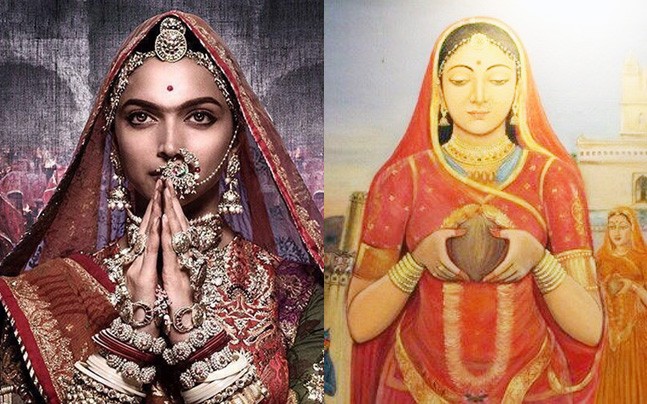POWERFUL: Films have the power to do enormous good or terrible harm. Unfortunately, the trend seem to be to use Bollywood to polarise and divide. Film makers and viewers should both start acting responsibly
By Nazrana Darvesh
Bollywood, or the Hindi film industry of India — which produces almost 1000 films every year — is the world’s largest film industry showcasing various lives in different themes like comedy, horror, drama, action, romance and thrillers.
However, there has been a changing trend in the representation of Indian films in past few years. There is notable change too in the selection of presidents of the Film and Television Institute of India, which is fully aided by the Ministry of Information and Broadcasting, Government of India.
The Indian film industry has become more hate oriented, twisting historical facts and presentation of wrong views with justifying characters and roles in the last few years
The issue of the film ‘Padmavat’ was very curious. Even before the film was released there were protests, even without witnessing the film. It was said that the film was an insult to Rajput honour. But those who watched it know well that there was no such thing. In fact, the movie showed the Rajputs in high honour and complete denigrating Muslim rulers — presenting King Allauddin Khilji as a barbarian, running after women and devoid of culture. Historical accounts tell us that he was a cultured king, who not only built Hauz Khas but also streamlined the market mechanism of trade in Delhi.
The film was based on a fictional novel, Padmavat. Padmavati was not a historical character but a creation of fiction. However, the movie brought so much life to her character that the audience failed to realize her fictional existence in the movie and were left to leave the theatres with memories of her as an ‘abla nari’ (helpless woman) who was the target of a Muslim ruler.
The movie ‘Kesari’ very tactfully overlooks the real enemy, the British, and presents those in their service as heros. It highlights Afghans, who were in fact fighting for their freedom, as the enemy. As the Durand Line to demarcate the border between British India and Afghanistan was created in 1893, dividing the Pashtun heartland, there was discontent among the tribes whose homeland was divided.
The British sent military expeditions to quell this tribal rebellion which later took the shape of the Battle of Saragarhi in 1897. But this incident is featured as a communal war in the film with the title Kesari (saffron) suiting the satisfaction of present popularized ideology. Scenes, weaved in before and during the war, only heighten the contrast between the two communities and send out a deeply polarising message at a difficult time in global politics, where majoritarian forces are ripping apart our secular fabric.
Another movie to be considered is ‘Ek ladki ko deka toh aisa laga’ — Bollywood’s first lesbian romance since India decriminalized gay relationship last year. What makes this film different from other similar films is that it tried to convince the audience to accept homosexuality with an emotional touch, appealing to Indian families and Indian culture. This shows how movies can be the source of popularising even the most bizarre laws and promoting their quick acceptance even in a society like India.
Featuring movies on Indo –Pak relations and enhancing anti-Pakistani sentiments among Indians to further create tensions between the two countries is also become common in the Indian film industry. Sarabjit, Ghazi attack, URI, Romeo Akbar Walter are a few. Though the movies are featured on true incidents, the scenes, action, dialogues and even the story is drastically twisted in such a manner that the movie turns out to be a sole witness of the incident hypnotising the audience and leaving a negative impact on them.
The agony is that our Indian army is very well presented in movies with excellent tributes offered to them. However, there is much difference between their real life and reel life, which never comes into the limelight or nobody dares to present in movies.
Another change in the film industry in recent years is open criticism of the Opposition government by means of movies like ‘Indo Sarkar’ and ‘Accidental Prime Minister’.
‘Indu Sarkar’, again a fictional character with very well framed name, is shown as a victim of the Emergency during Indira Gandhi’s rule.
‘Accidental Prime Minister’ too claims to be a ‘dramatised’ and ‘fictionalised’ version of the author Sanjaya Baru’s book which includes certain moments that — wittingly or unwittingly — tend to support a particular political narrative
In new releases we have ‘Kalank’ — yet another blot on the image of Muslims. The film though a fictional love story is featured from the communal angle in the pre-Independence period/partition time and at a fictional place, putting the sole blame of partition on Muslims and depicting blood-curdling violence by them. The movie begs the question “Did people actually behave like this back then?”
Some might think these are just movies and do not need much attention and so let it go. But the truth is that Bollywood films are watched by millions of impressionable people both in India and abroad. Their popularity creates a moral obligation on filmmakers to act responsibly. Hence the responsibility lies on film makers and actors to not let feelings of hate and divisiveness spread through movies.
The audience also needs to act in a responsible manner to check the ground realities behind each film before coming to any conclusion regarding it. Today, when our world is threatened by extremism and misogyny, cinema can be an effective instrument for promoting social cohesion and should not be a tool to intensify communal discord.
